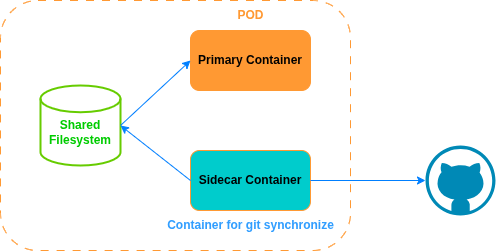I. Overview
This post describe the sidecar pattern and some use case of it
II. Getting Started
Definition: The sidecar Pattern involves deploying a helper container/process alongside a main application container/process. This “sidecar” is responsible for handling auxiliary task that the main application needs but are not part of its core business logic.

Imagine your main application is a motorcycle. Its purpose is specific and well-defined: to drive. It’s optimized for that one job. Now, you want to add extra functionality, like carrying luggage or a passenger. Instead of re-engineering the entire motorcycle, you attach a sidecar
- Motorcycle (Main Application): Does the core work. It doesn’t know or care what is in the sidecar.
- Sidecar (Sidecar Process): Provides supporting features. It runs alongside the motorcycle, shares the same journey (lifecycle), but encapsulates its own logic.
- The Attachment: Both share the same context (like the network and storage).
Why use it ?
The primary goal is to decouple cross-cutting concerns from the main application code. These are task that many services need but aren’t part of their specific job, such as:
- Logging: main application write logs, and sidecar collects, formats, and forwards them to a centralized logging system
- Monitoring & Metrics: a sidecar can collect performance metrics from the application and export them to a monitoring system
- Configuration management: a sidecar can pull configuration updates from a central store (Git, Vault, …) and make them available to the main application on a shared volume.
- Service Mesh Proxy
Some Diagram


Pros and Cons
Pros: Language Independence, Reduces Complexity in Application Code, Reusability, Encapsulation
Cons: Increased Complexity in Deployment, Resource Overhead, Potential for Latency
Summary: The Sidecar pattern is about separating concerns. While it’s an almost essential tool for managing the distributed complexity of a microservices architecture, its principle of decoupling is useful anytime you want to add functionality to an application without modifying its core code.